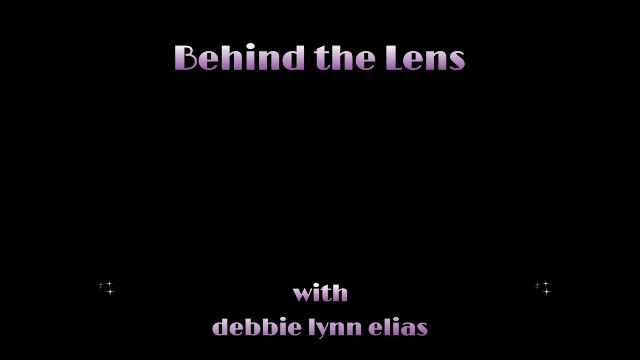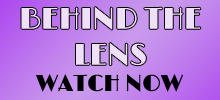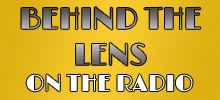
An exclusive interview with director JAMES MADIGAN breaking down the fights, and the flight, of his first feature directorial film, FIGHT OR FLIGHT.
SYNOPSIS: Exiled American agent Lucas Reyes (Josh Hartnett) is given one last chance to redeem himself – the assignment is to track down and identify a mysterious, international high-value asset known only as The Ghost on a flight from Bangkok to San Francisco. Complicating matters, the plane is filled with assassins from around the world who are assigned to kill them both. The pair must work together in a fight for their lives. At 37,000 feet, the stakes have never been higher.
FIGHT OR FLIGHT is directed by James Madigan with script by Brooks McLaren & D.J. Cotrona, and stars, among others, Josh Hartnett, Katee Sackhoff, Charithra Chandran, Julian Kostov.
Moving up the creative production chain his extensive work in visual effects on films like “Insurgent“, the “Red” franchise, “Man on a Ledge“, and “Iron Man 2“, as well as second unit director on films like “The Meg” and “Transformers: Rise of the Beasts“, director JAMES MADIGAN takes his place among some of the best action directors working today with FIGHT OR FLIGHT. And what a flight this is! Forget about snakes on a plane. How about a chainsaw on a plane?! (But never fear. There are snakes on the ground – the two-footed kind.) Boasting fantastic action, and considering the majority of it occurs in the aisles of planes or a bathroom, makes it even more so. Very cognizant of spatial relations and what might be perceived as limitations with an action film like this, Madigan makes great use of a “single location” (the plane) but is constantly moving the action throughout all areas of the plane. And let’s not overlook some terrific bloodshed and body maiming, not to mention some very creative kill techniques with the chainsaw being the icing on the cake.
I was beyond pleasantly surprised by the chemistry between Josh Hartnett and Charithra Chandran, which really aids with the story development. You feel a real connection, which makes the unfolding backstories about their characters, Lucas and Isha, and their trust-building very authentic. Admittedly, not a big Hartnett fan as a rule, I like him and his character here. Standoutwithin the film is the attention paid to supporting players Danny Ashok and Hughie O’Donnell, who are HILARIOUS as flight attendants Royce and Garrett; especially O’Donnell as he brings to life the needs of Garrett’s first-class customers. To die for (no pun intended)!
It’s hard to believe this is only Madigan’s first feature directorial. He has done an amazing job, with his VFX background proving an advantage in staging and choreographing this film. Serving as Madigan’s right-hand is cinematographer Matt Flannery, who brings his unparalleled expertise to the fore thanks to his work with “The Raid” and “The Raid 2“. Joining in the excellence is editor Ben Mills, who keeps things moving with a fast pace, high energy, and fun, while embracing the developing dynamics between the characters.
In this exclusive interview, JAMES MADIGAN discusses his approach to FIGHT OR FLIGHT, notably emphasizing the importance of tracking character arcs and storytelling, which he believes was aided by his extensive experience with action and special effects. Madigan has nothing but praise for cinematographer Matt Flannery, who brought unique visual styles to the film. The same goes for his sound team, led by Lee Herrick and John McKay, for creating impactful, varied sound effects. While action is at the forefront of FIGHT OR FLIGHT, James is quick to note the importance of casting, particularly finding fresh talent like Huey O’Donnell and Katee Sackhoff. Reflecting on the challenges of this first feature directorial, perhaps most important to James is emphasizing the need to balance action with storytelling.
As we dove into the nuts and bolts of FIGHT OR FLIGHT, a large part of which is the action, James spoke at length about his close collaboration with stunt coordinator Alain Moussi and fight choreographers Balazs Lengyel and Brahim Achabbakhe to ensure the action sequences remained rooted in the characters’ story. Walking them through the desired tone and attitude, they collaborated to create fight scenes that advanced the narrative. The goal was to keep the action focused on Hartnett’s character arc, with the choreographers understanding that they were storytellers first. The team developed pre-visualization with smaller cameras and then worked with Madigan to refine shots that best captured the character’s emotional journey while maintaining the film’s dynamic action style.
Collaborating with Matt Flannery was crucial to the film’s visual style. As both cinematographer and primary camera operator, Flannery brought unique skills from his work on “The Raid” films. Madigan and Flannery were intent on avoiding the creation of a “clone of existing action movies” and focused on developing a distinctive visual approach. Proving particularly adept at navigating confined airplane space, in spite of his 6’4″ height, Flannery operated the A-camera himself. Working together, they ensured the camera’s movement would track the intensity of scenes, experimenting with color shifts and interesting visual techniques. James appreciated Flannery’s ability to light complex locations and find creative solutions, even when resources were limited. The collaboration was driven by a shared goal of keeping the visual storytelling rooted in the characters’ experiences, ensuring that the cinematography enhanced the narrative rather than overshadowing it. Madigan considered himself “really lucky” to have worked with Flannery, who brought both technical expertise and creative vision to FIGHT OR FLIGHT.
Finding his own prior visual effects experience extremely beneficial, James found that his background allowed him to handle technical challenges effortlessly, almost like “walking down the street.” He could quickly assess visual effect solutions without consulting budgets, understand wirework and prosthetic challenges, and focus more on storytelling, directing actors, and tracking character arcs. His extensive post-production experience also helped him anticipate potential issues on set, making the filmmaking process smoother and more efficient.
Hand in hand with the action and accompanying visuals of FIGHT OR FLIGHT is the sound design. Described by James as being of “critical importance”, particularly in action sequences, he was very specific about avoiding repetitive punch sounds, knowing that the audience’s brain would track predictable patterns. For complex sequences like the chainsaw scene, he worked closely with the sound team to create unique sonic experiences while avoiding gratuitous gore. The goal was to keep the sound interesting and varied, with some sequences having up to 50 different sounds layered and interacting. He was particularly focused on maintaining the film’s tone and comedy, even during intense action moments. According to Madigan, the sound team “loved the creative challenge”, and he worked collaboratively with them to ensure the sound enhanced the storytelling without becoming overly graphic or monotonous. The sonic key was to create a soundscape that was dynamic, character-driven, and supported the film’s overall narrative and emotional arc, rather than just serving as generic action movie sound effects.
But above and beyond all of the technical production processes, once the script was in place, all eyes turned to casting before the cameras ever rolled. As you’ll hear James discuss, the casting process for FIGHT OR FLIGHT was quite unique. For characters like Garrett, James found Huey O’Donnell, who had never acted before, and was a revelation. Initially, James wanted to cast a friend for the role, but when he saw Huey, he knew he was perfect. Similarly, Danny Oshock was a great find. For the role of Katherine Brunt, James was immediately convinced Katee Sackhoff was the only choice, despite being advised to meet other actors. He trusted his instincts and felt no one else could play the role as well as she could. The key was finding actors who naturally embodied the characters and could contribute to the storytelling.
As a first-time feature director, JAMES MADIGAN learned two key lessons, namely:
- Confidence in Handling Technical Challenges: He was relieved to discover he could effectively manage the technical complexities of action sequences and tight shooting schedules; and
- Performance and Story Tracking: The most critical lesson was ensuring character development and narrative coherence, especially when working under time constraints without a working edit. He gained confidence in his ability to maintain a compelling and cohesive story, which is often a challenge for first-time directors.
As you’ll hear in this interview, the energy you see on screen mirrors James Madigan’s own energy and enthusiasm not only for FIGHT OR FLIGHT, but for directing and storytelling, and using all the tools in the directorial toolbox appropriately and to their best storytelling advantage.
TAKE A LISTEN. . .
by debbie elias, exclusive interview 05/06/2025
FIGHT OR FLIGHT is in theatres nationwide on May 9, 2025.












